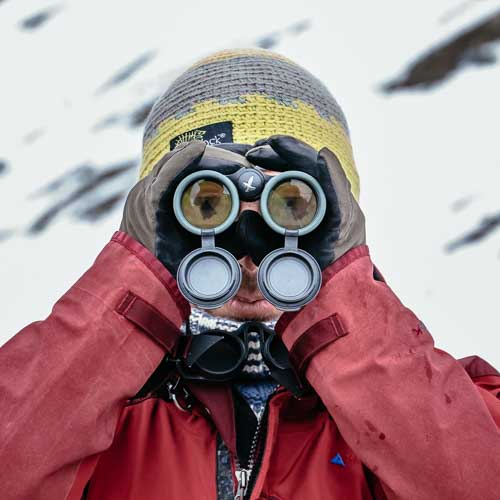007 Bearded Seals and Hydrophones
Contributors

|
Mario Acquarone
Naturalist, Expedition Leader, Skipper, Educator
|
||
|
|
Chris Marquardt
Photographer, Author, Podcaster, Traveler, Educator
|

|
Mario AcquaroneNaturalist, Expedition Leader, Skipper, Educator |
|
|
Chris MarquardtPhotographer, Author, Podcaster, Traveler, Educator |
Notes
Bearded seals are a pan-arctic species and derive their name from their long whiskers. These hairs often curl as the seals get dry after a long haul out on land or on ice. Their fur is almost homogeneously grey with different tones around the eyes and nose. In Svalbard, in particular, where they find their benthic food in the mud from eroded basaltic rocks, they get tanned by the reddish sediments over most of their head. A particular characteristic of male bearded seals is their underwater singing during the breeding period in the spring. These calls make one wonder about the origins of the belief in the singing of mermaids and can be heard through the hull of a vessel. Having a hydrophone at hand surely improves the quality of the performance. These instruments are fairly simple devices for listening to the multitude of fascinating underwater sounds.




